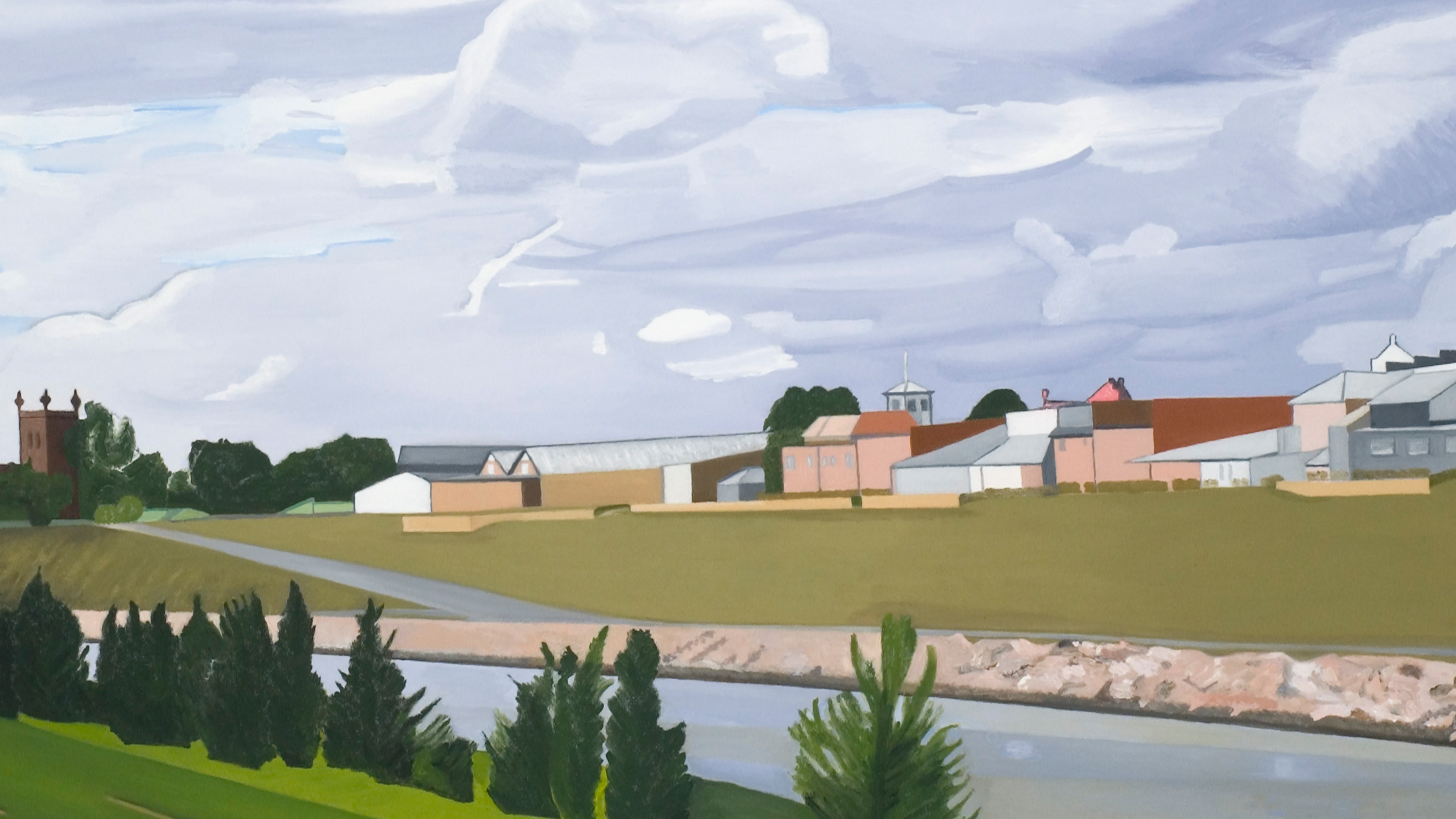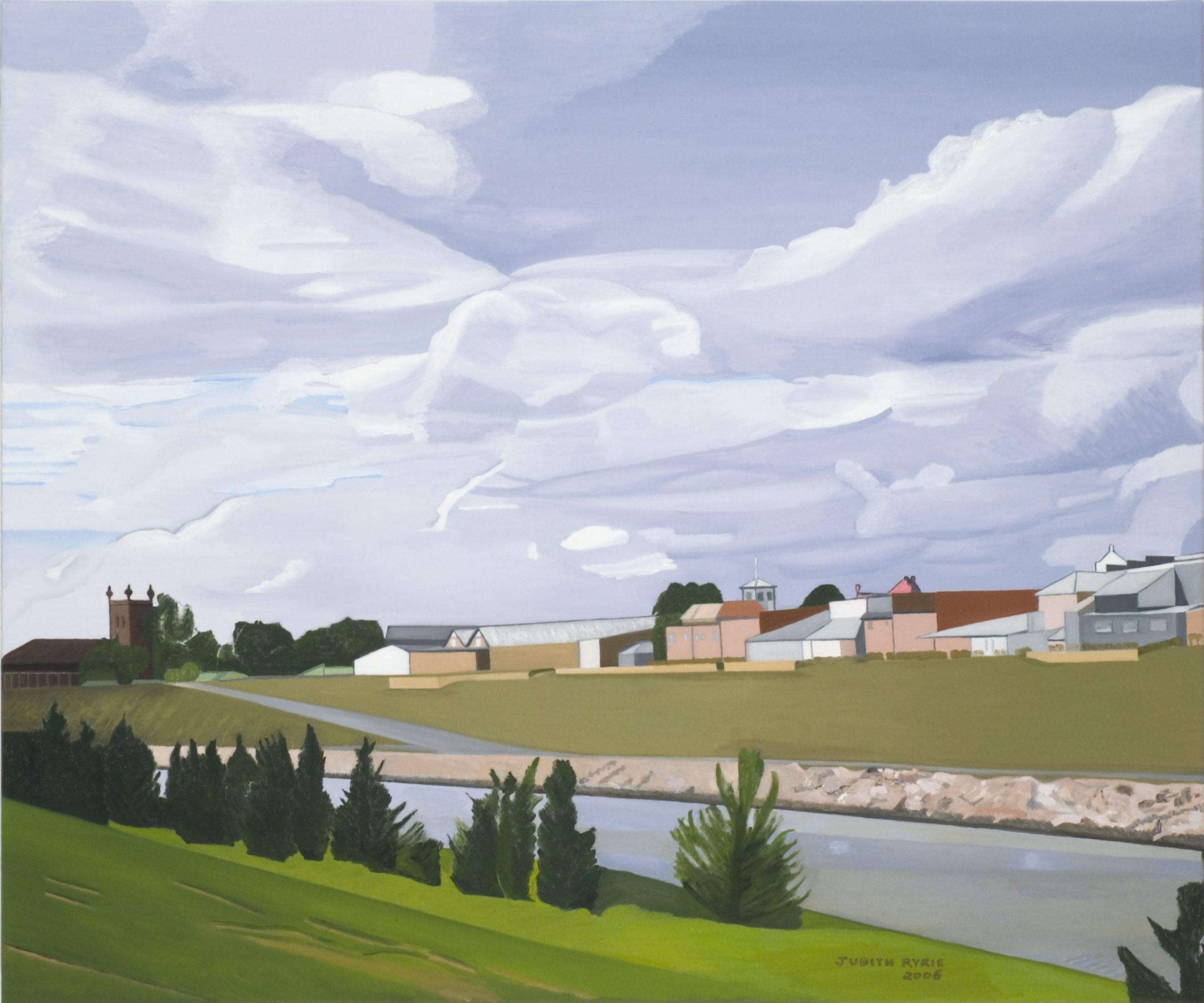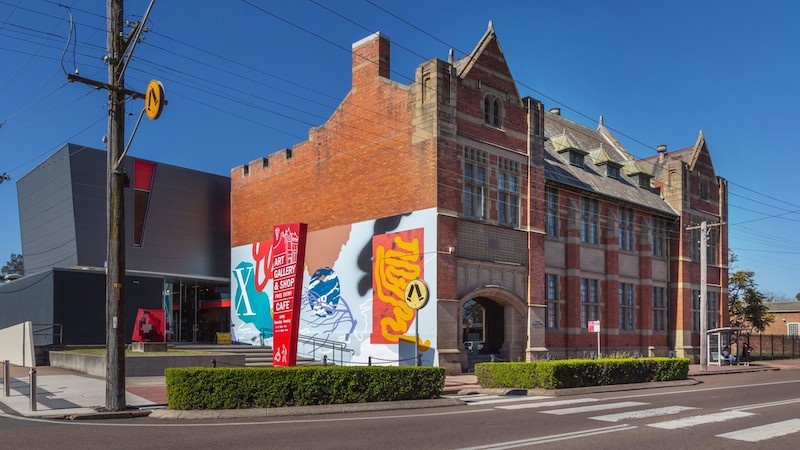Apologies to Vermeer and Thanks to Cezanne
Judith Ryrie, Afternoon by the river – Maitland, 2006
In high-keyed colour and with a light touch, Judith Ryrie (1934-) records an afternoon by the river at Maitland in a style she terms ‘graphic rural realism’. Ryrie is a Sydney-based artist, but she was born in regional Dubbo. Alongside eleven other artists, Ryrie painted this view for the exhibition View of Maitland from the riverbank (with apologies to Jan Vermeer and View of Delft) at Maitland Regional Art Gallery (MRAG) in 2006.
Each of the twelve invited artists were given a copy of the Vermeer painting of Delft and asked to create their own view of the city of Maitland using the print as inspiration. Painting on canvases of the same size as Vermeer’s, the artists gathered on the riverbank over the course of two weeks. In that time they produced studies, sketches and finished works while members of the public wandered between and watched them working. Each artist produced work according to their own vision and style, resulting in a range of impressions and vistas of the city from the river.
Ryrie’s painting combines realism with elements of abstraction. The walls and rooves of the bulky buildings that line the riverbank are reduced to geometrical forms of cubes, prisms and rectangles. Even the soft, scudding clouds in the pearly sky are treated with a sense of volume that is defined by their edges. The composition of the image, and the combination of its natural and built environments, is held together by the line of the walking path that extends from the recently renovated church down to the river and along its banks.
In some ways, Ryrie has channelled the influence of another influential artist who revolutionised painting some 250 years after Vermeer. Like the Post Impressionist Paul Cezanne, she has treated parts of her painting ‘by means of the cylinder, the sphere and the cone’; representing nature and our perception of it, rather than realistically reproducing it.





